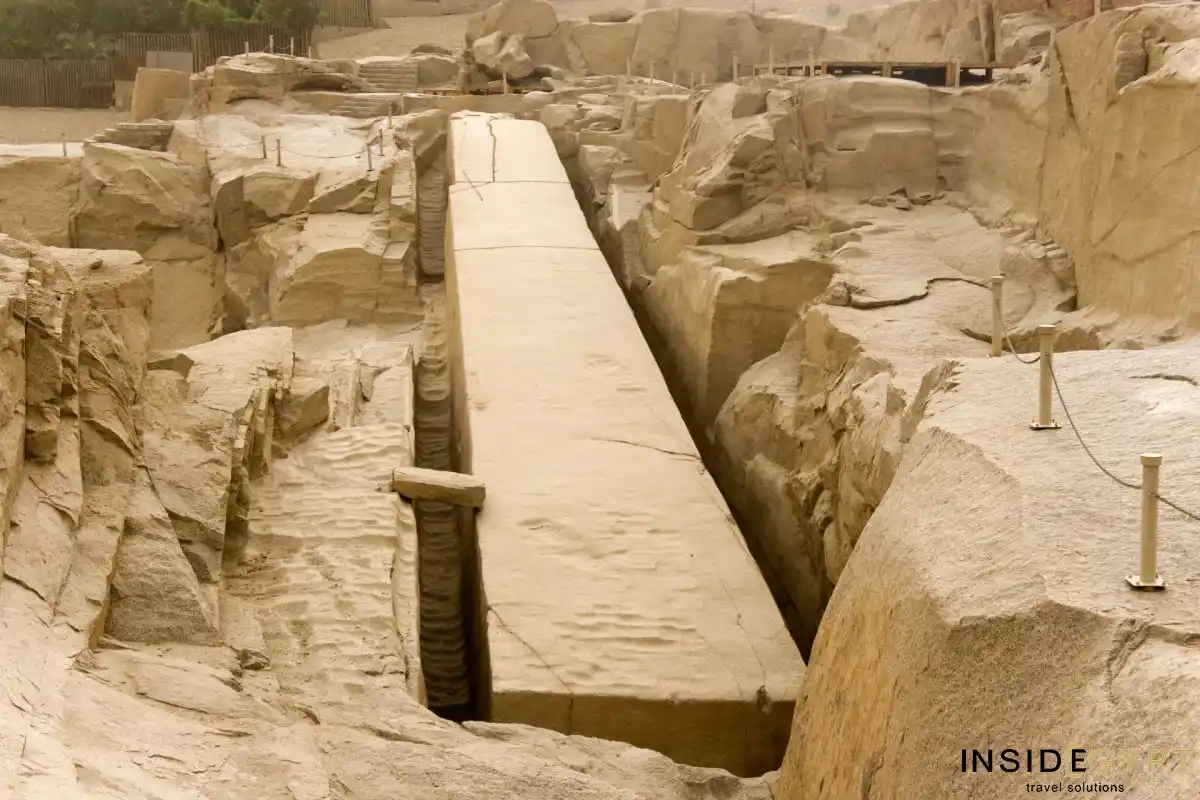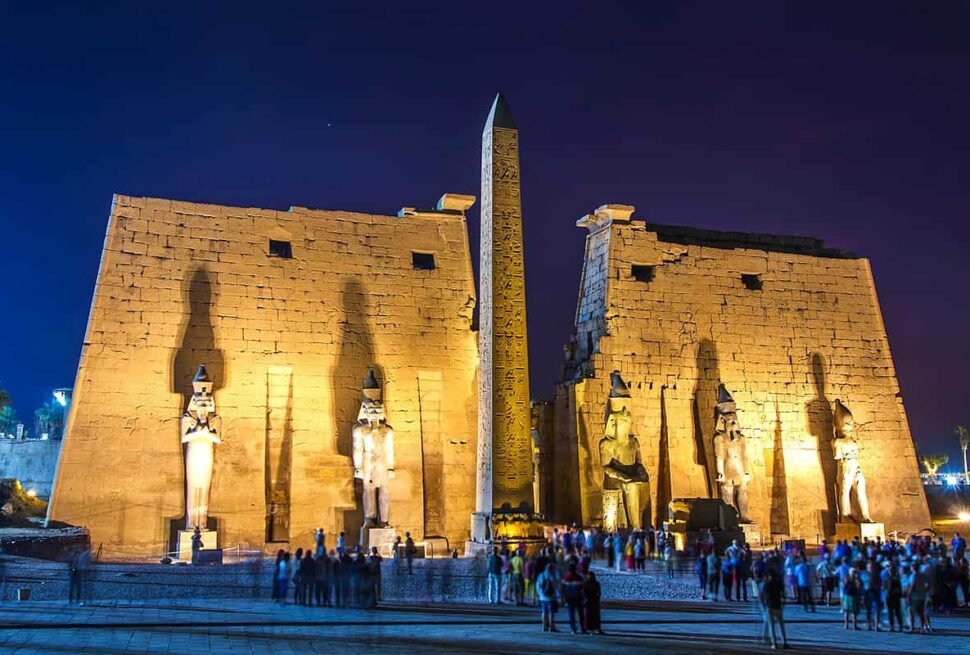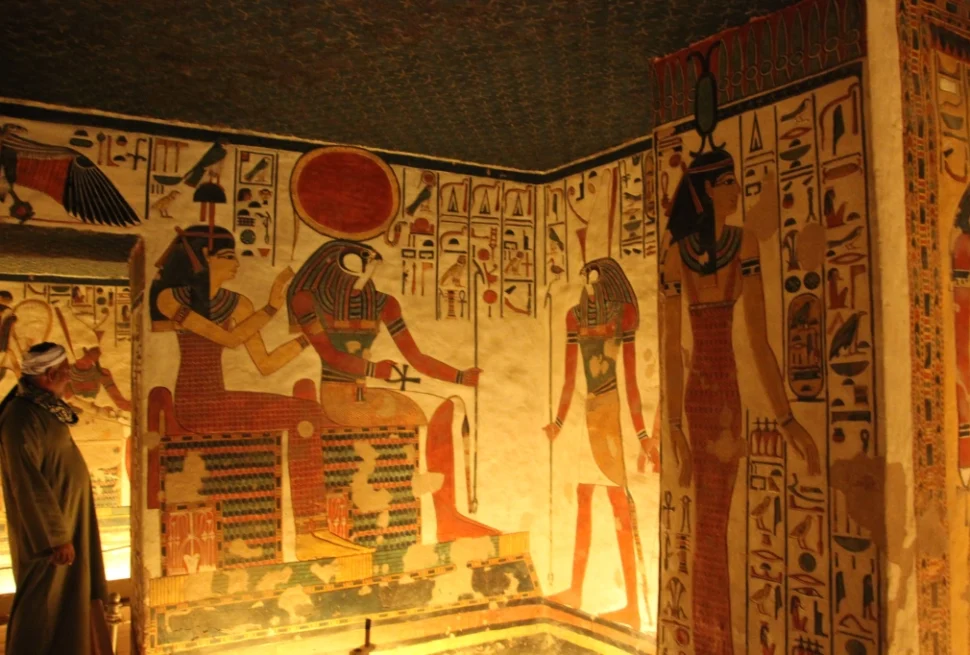Unparalleled, standing within the standing stone quarries at Aswan, lies the Unfinished Obelisk. This massive granite monument, left incomplete by circumstances, bears witness to Egypt’s grand dreams and the complications faced in ancient construction.
What is The Unfinished Obelisk?
The Unfinished Obelisk is an Egyptian monolith abandoned on account of problems arising during its construction. Had it been finished, it would have become the largest monolith ever known to have been erected, measuring around 42 meters in height and weighing about 1,168 tons. An invaluable resource for understanding ancient stonework practices, it remains partially quarried from the bedrock in the northern part of the Aswan quarries.
Various Historical Events: Who Ordered the Obelisk?
The putting up of this obelisk is reckoned to have been during the time of Queen Hatshepsut, one of the most famous female rulers in Egyptian history (c. 1473–1458 BC). The erection was supposed to complement the Lateran Obelisk erected originally at Karnak but now situated in Rome, though the obelisk got abandoned due to great cracking which rendered it useless for one intended application.
Quarrying Techniques: How Was It Made?
The Unfinished Obelisk was carved directly from the base rock with an array of sophisticated methods:
Grooves and Wooden Wedges: Workers carved deep grooves all around the obelisk and inserted wooden wedges. These wedges were then soaked with water, causing them to swell and exert force enough to fractures the granite along these groove lines.
Dolerite Balls: The granite was worked down by pounding and chipping with dolerite balls, which are harder than the granite, marks of which can still be seen upon the surface of the obelisk.
Ochre Lines: Guidelines for the workers were painted on the stone using red ochre, which aided in precise and symmetrical carving.
The Unmentioned: Why Was It Left Out?
The works for the Unfinished Obelisk stopped following the emergence of a large crack within the granite, leaving the obelisk incapable of fulfilling its intended purpose. The crack remains visible- delivering a bitter reminder of the plight of an ancient building process.
Transporting and Erecting Obelisks: Insights from the Unfinished Obelisk
Though never finished, the Unfinished Obelisk has enthusiastically contributed to uncovering the method of moving and erecting obelisks:
Transport overland: Huge sledges and wooden rollers were utilized to traverse the land with the transported obelisk. It seems the workers dragged stones down recently laid stone or wooden paths that were sometimes lubricated with water to reduce friction.
River Transport: Where conditions allowed, the obelisks could be floated down the Nile on purpose-built barges, which eased the task of transporting these great stones.
Erection Techniques: Once on the spot, a masonry of mudbrick or limestone was put together to raise the obelisk down acting as a giant lever where levers, ropes, and pulleys guided its descent into position.
Visiting the Unfinished Obelisk Today
One of the more popular tourist attractions, the Unfinished Obelisk is set some 4 kilometers from the train station in Aswan. Daily visits are possible from 7:00 AM to 4:00 PM. Entry charges are approximately EGP 220 per adult and EGP 110 per student.
Conclusion
The Unfinished Obelisk stands as a giant reminder of the endeavoring spirit of the architects of ancient Egypt. Although left incomplete, it helps gain rare and invaluable insights into the advanced skills of ancient workmanship and their challenges in trying to create a mark for themselves in history. Today, it continues to enthrall the limelight, preserving the remarkable achievements of an ancient civilization for all time. Book your trip to Egypt and visit the Unfinished Obelisk and Aswan Attractions now with Step To Egypt.




